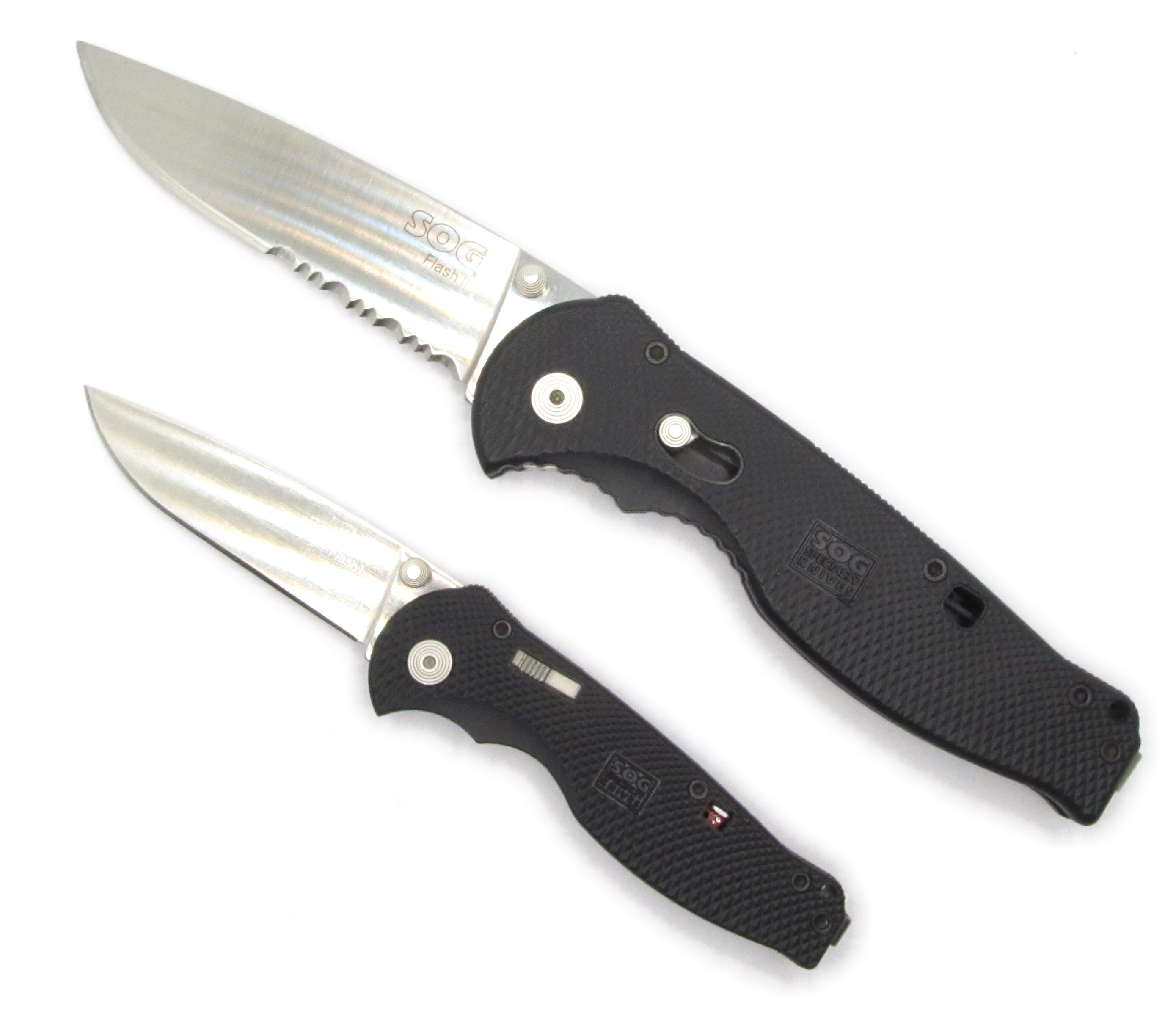Oh yeah.
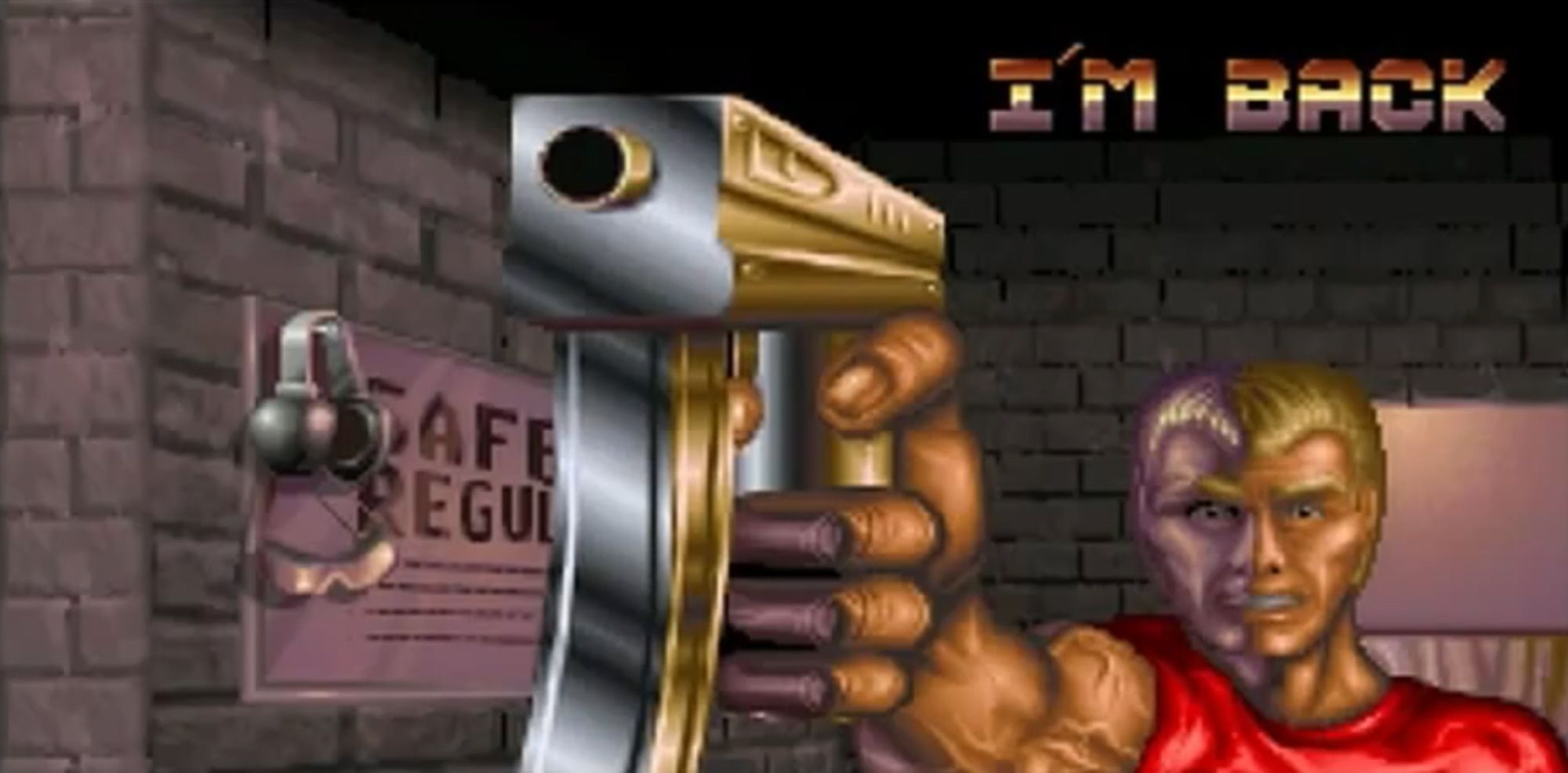
I underwent a bit of a hiatus here because my photo taking space temporarily evaporated due to some ongoing home improvement shenanigans.
Anyway, just like the meme above these two knives are quite a flashback. I'm inspired to show these off now because we've been looking at Axis-lock-alike folders recently, not least of which because suddenly there are a whole shitload of them on the market since Benchmade's patent on the mechanism expired.
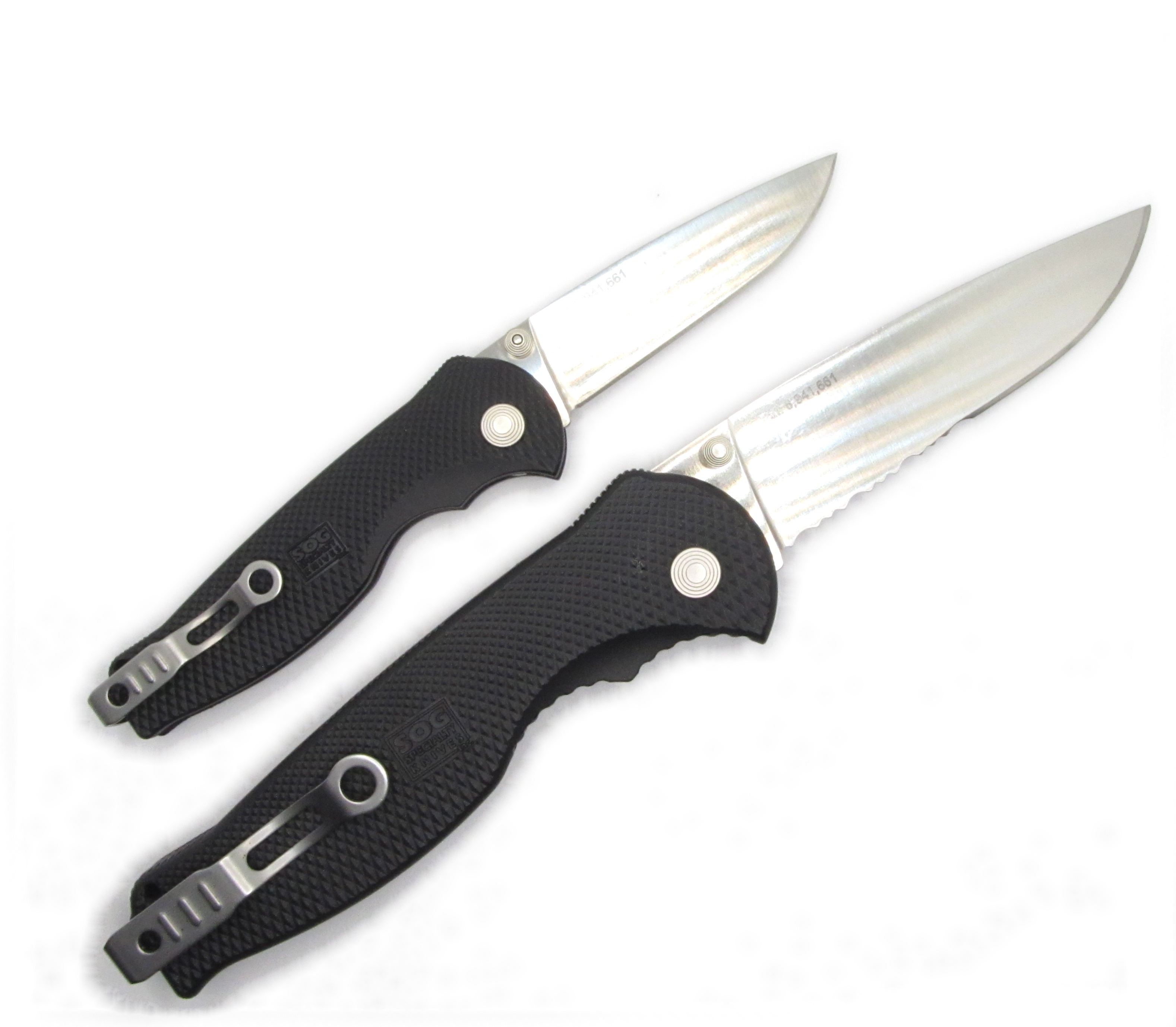
But these, the SOG Flash II and its smaller bother the Flash I, are 22 years old. This is how they did it back in the day. So let's hop in our time machine to set the stage: It's 2002. N'Sync, Cheryl Crow, and No Doubt are playing on the radio. You and your frosted tips, your Goodwill trench coat, your Matrix-styled little round mirror shades, and your Motorola Danger in your back pocket all combined were the baddest motherfuckers on the block. And if you're a knife manufacturer and you're sick of reading all the magazines fawning over Benchmade and their Axis Lock, which you can't use without paying them a shitload of royalties, what are you gonna do?
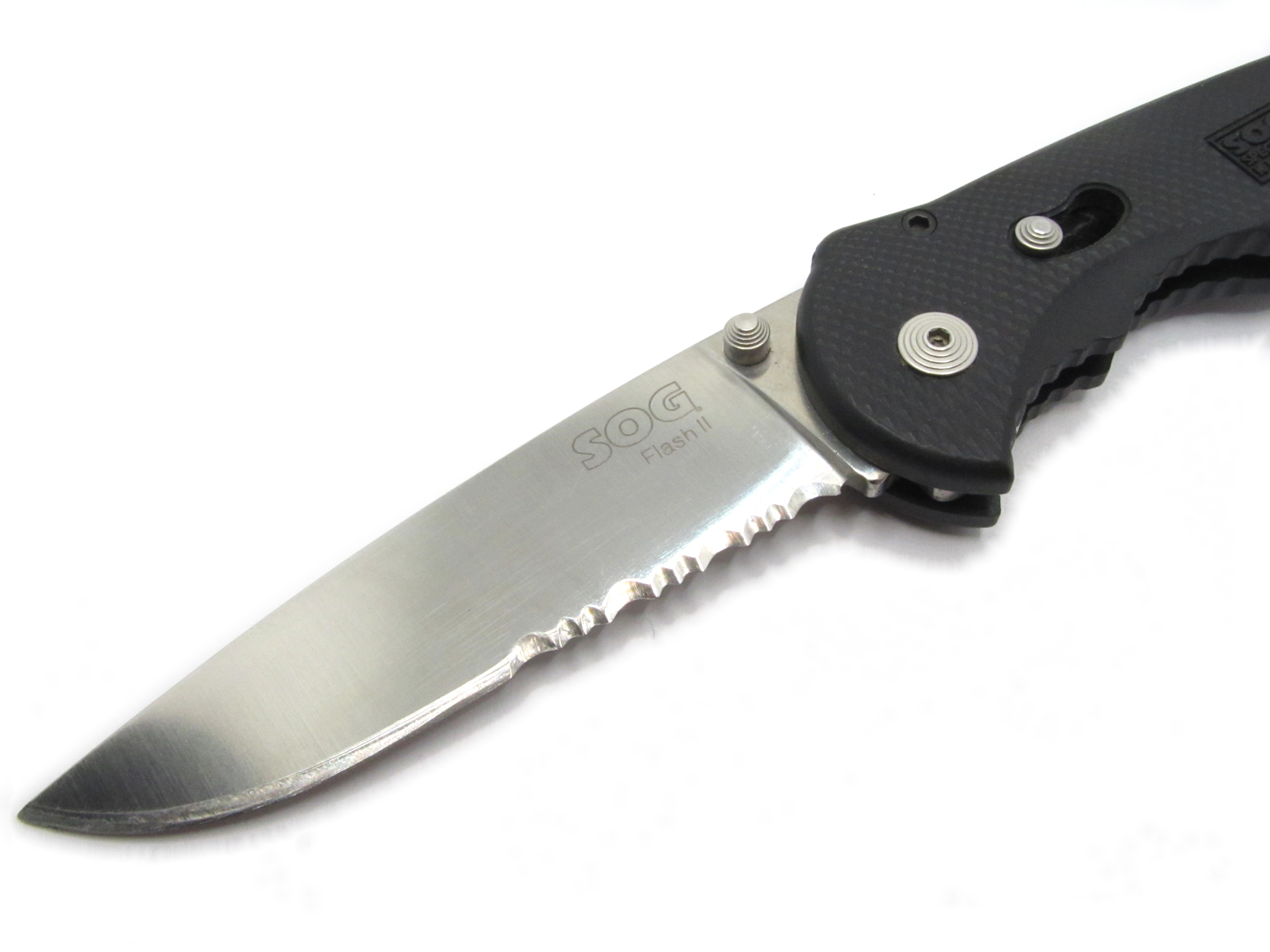
You're gonna invent your own thing that looks like an Axis Lock, and works kinda sorta like an Axis Lock, but isn't actually an Axis Lock so you don't get your Jnco's sued off. And you're going to do it with blackjack and hookers, goddammit, and you're going to make it tactical looking as all hell, and you're going to undercut Benchmade. By, like, a whole lot.
You're going to make the cutlery equivalent, in other words, of one of those supermarket checkout lane knockoff cartoon DVD's that has the same title and plot of the last big Disney movie in the hopes that somebody's grandma will come along and not know the difference.
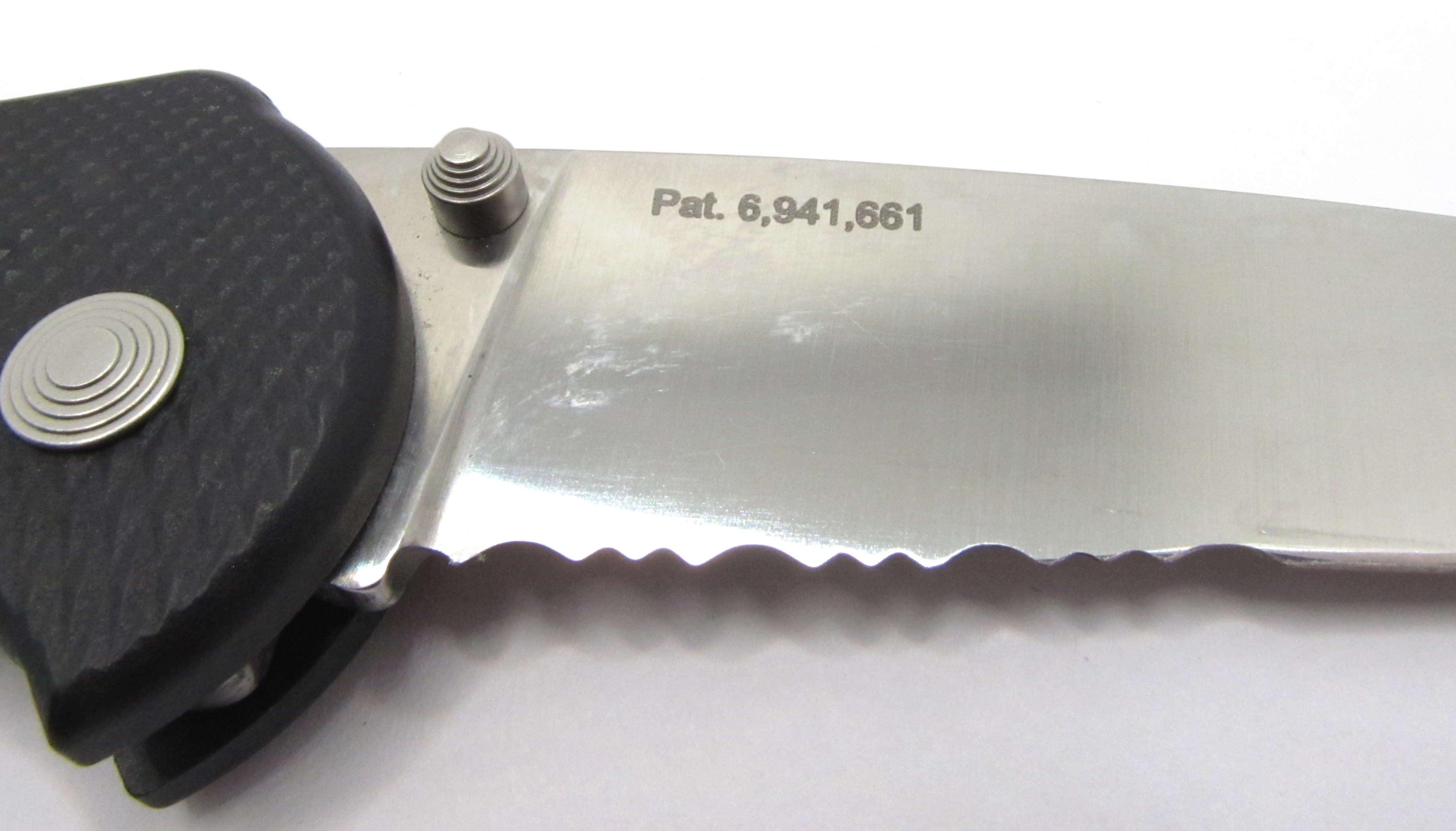
And then you're going to throw a patent on whatever you came up with, just to rub it in, just so you can say, "See? We can do it, too."
At least that's my interpretation of things, which I just made up.
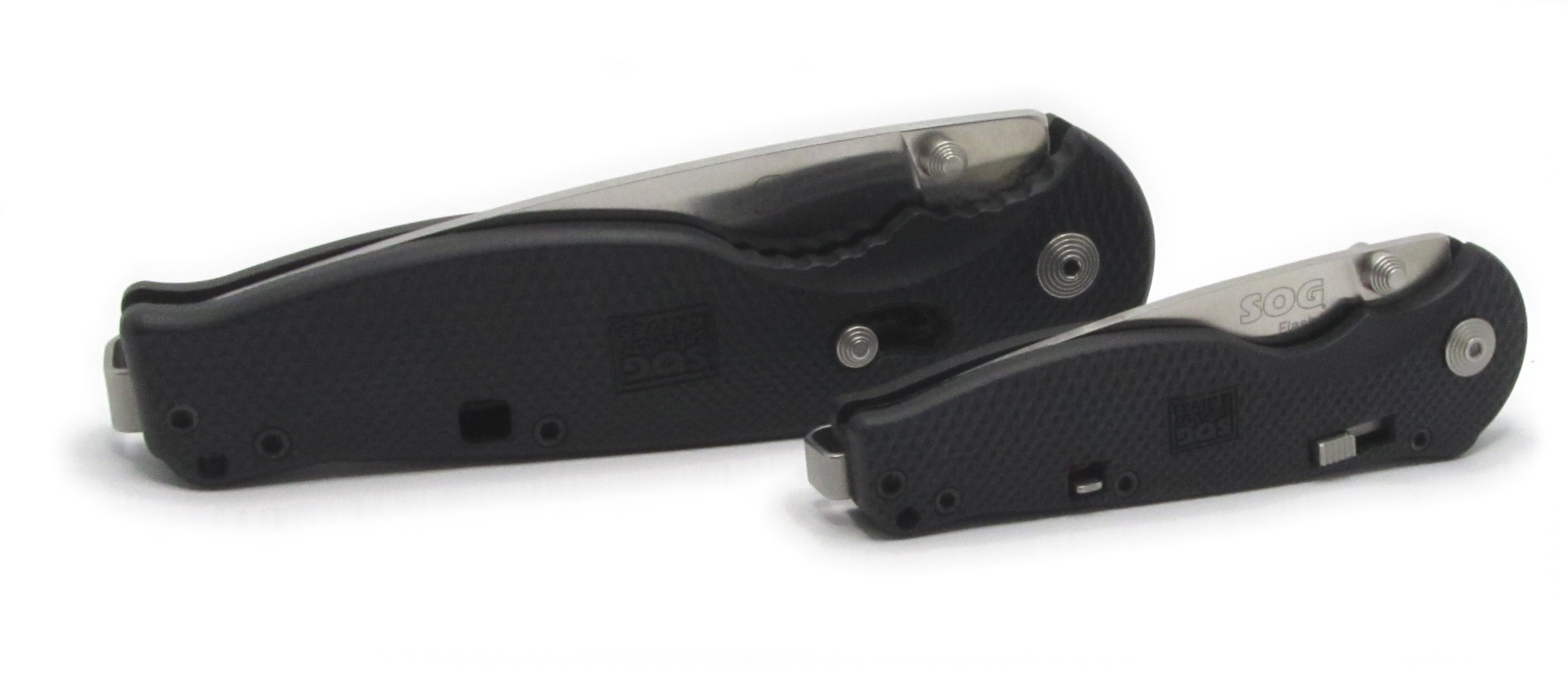
Big knife, little knife. Uh-huh.
So here we have the SOG Flash I and Flash II. And around that time their very closely mechanically related cousin the Trident (which I also have, and might show off later) which are all time capsules of their era.
First, the numbers. The Flash I is a compact knife, 3-1/4" long closed (including the clip), 5-3/4" long when open. The blade is 2-1/2" with about 2-3/8" of usable edge in a drop point profile. This puts it comfortably below the legal carry limit in many places. My example is a plain edge. The Flash II isn't a compact knife, at 4-5/8" long closed and a full 8-1/8" long open. Its blade, likewise a drop point albeit half serrated, is 3-1/2" long with a 3-3/8" usable edge... If you count the serrated portion as "usable." Both knives are spring assisted folders with SOG's "Piston Lock" mechanism. Both are deceptively light, with a rather low density for their size. The big one is 82.8 grams (2.92 oz) and the little one is 33.4 grams (1.18 oz).
These are not to be confused with the current SOG Flash AT and Trident AT, which have the new "AT-XR Lock" that like so many contemporaneous models appears to be based on the good old Axis mechanism.
No, these do their own thing. See, they didn't have a choice.
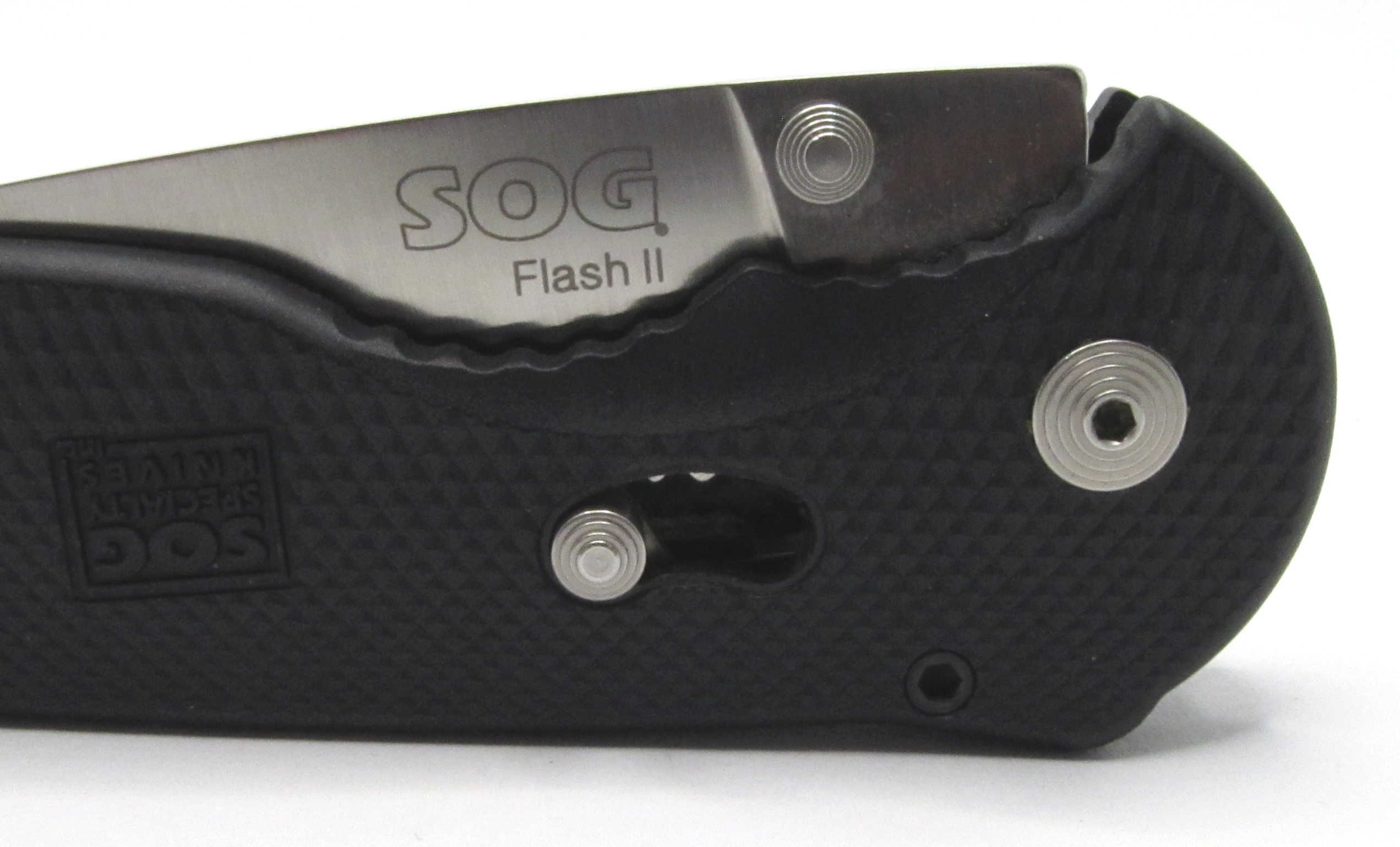
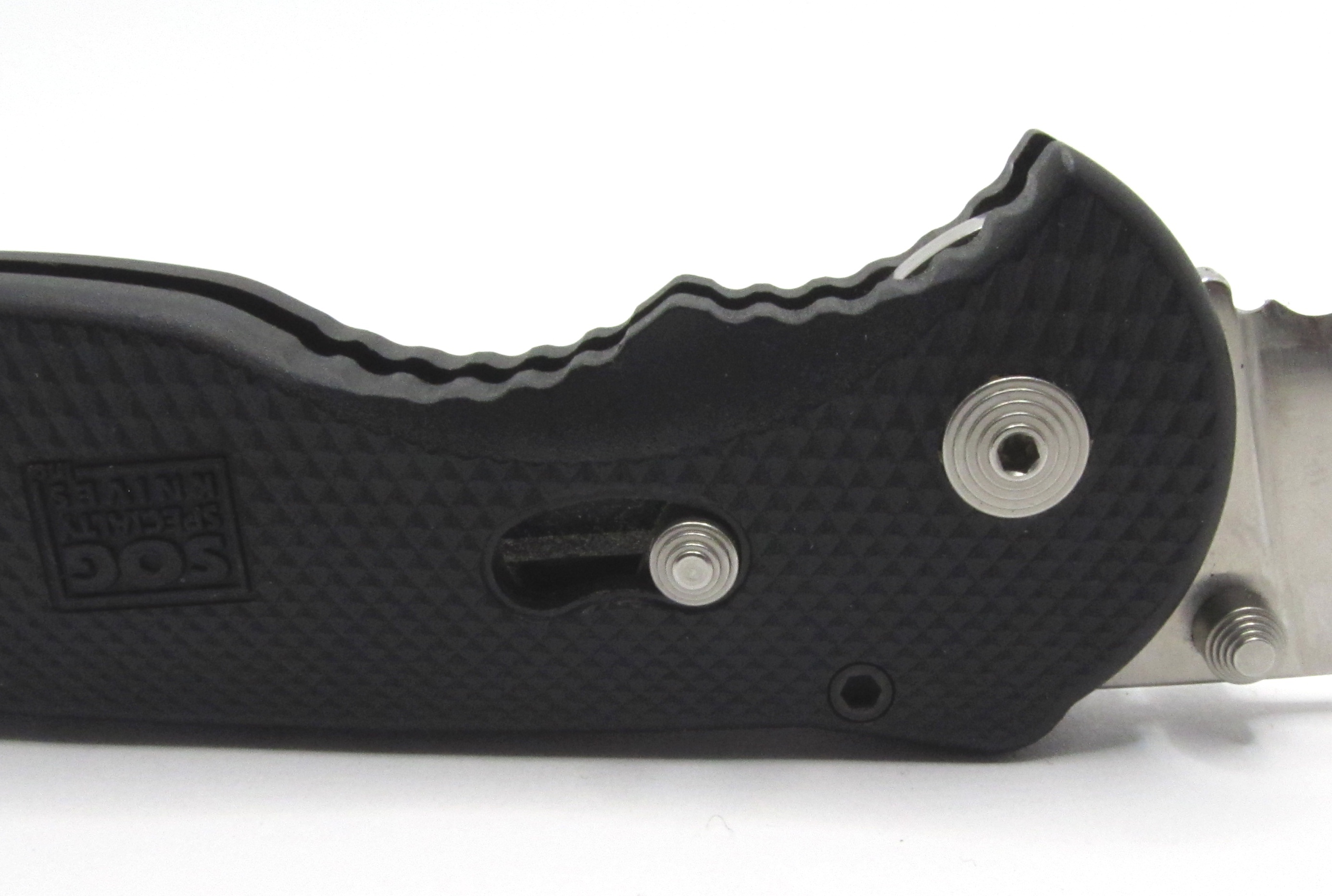
While it looks like a duck and ought to quack like one, too, it doesn't. You will notice that SOG's Piston Lock button toggles position when the knife is open vs. when it's closed, unlike the Axis lock which only has one rest position.
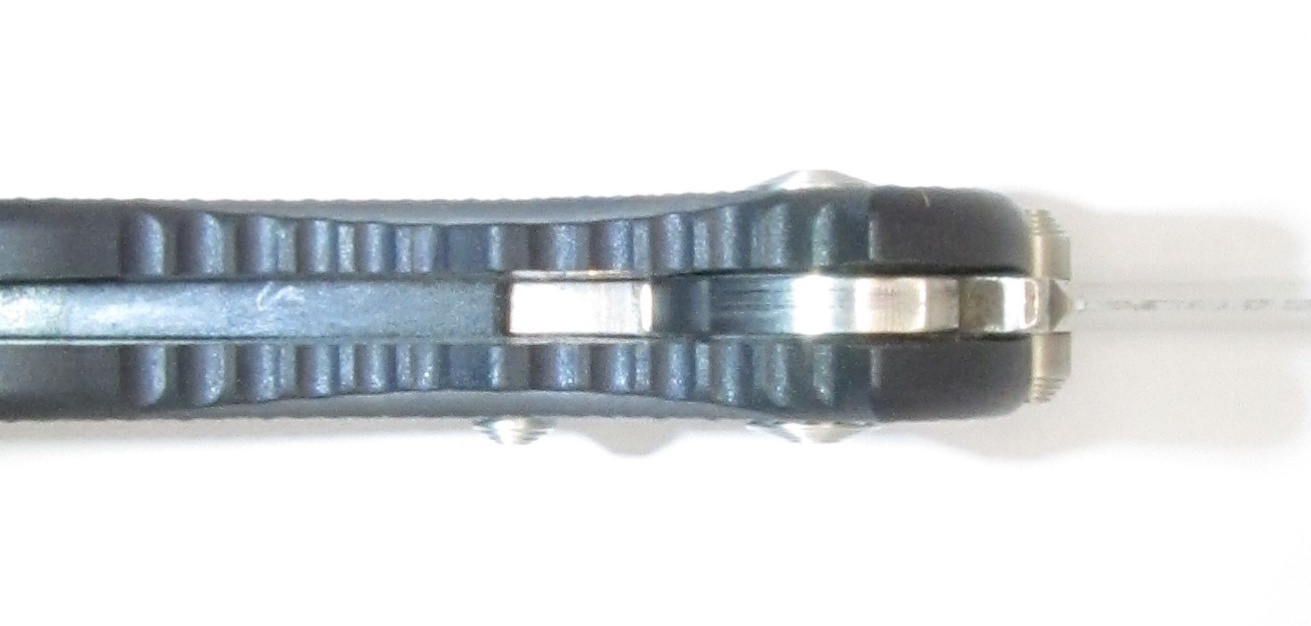
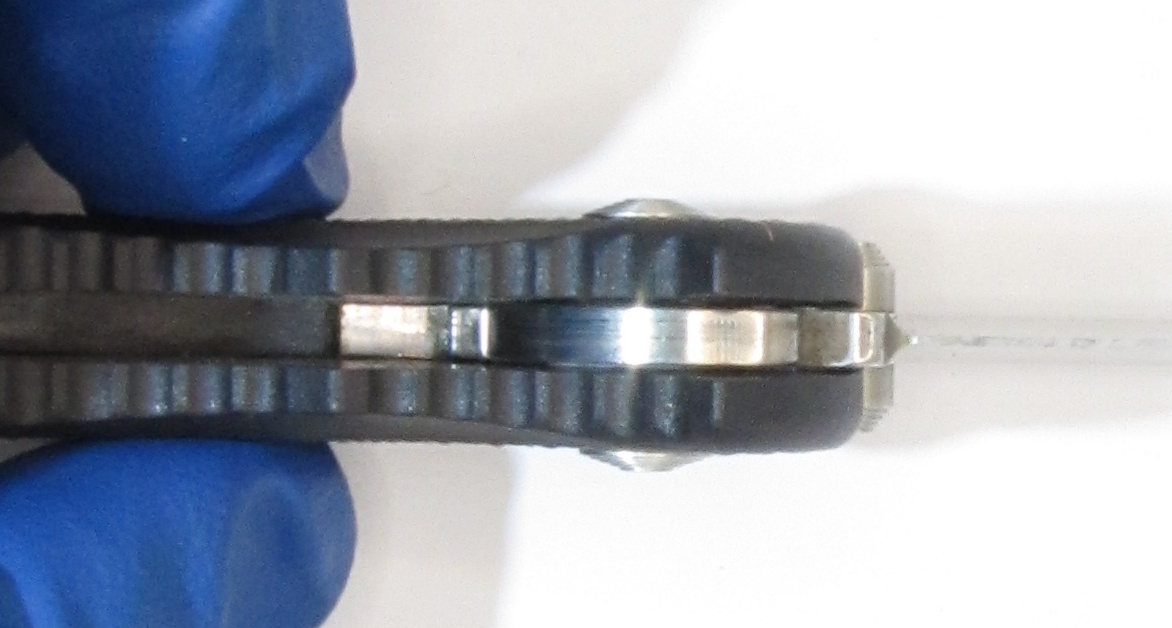
This was a bugger to photograph, but hopefully you can see that the lock is actually a two piece mechanism, with the toggle being separate from the bit that provides the lockup, the "piston." That's the shiny silver thing you can see in there. It has a rounded nose, which is just visible in the second photo. There is a bit of takeup slack in the toggle before it actually starts to engage the piston, and it can move independently. The piston slots into a cutout in the heel of the blade and locks it open, but it is fully restrained against its spring when the knife is closed. The patent might give you a bit of an idea about how it works although its parts are shaped a bit differently than the production item.
Since the lock mechanism is fully spring loaded and holds the knife open only, not closed, you cannot do the "Axis flick" with these knives to flip them open without touching the thumb studs. If you could, actually, these would function exactly like a side opening switchblade because the lock piston does technically hold the blade in the closed position as well -- it just doesn't lock it there. The blade is straining against its torsion spring all the time. That said, both knives snap open with considerable force even after two plus decades thanks to being quite heavily loaded by that spring.
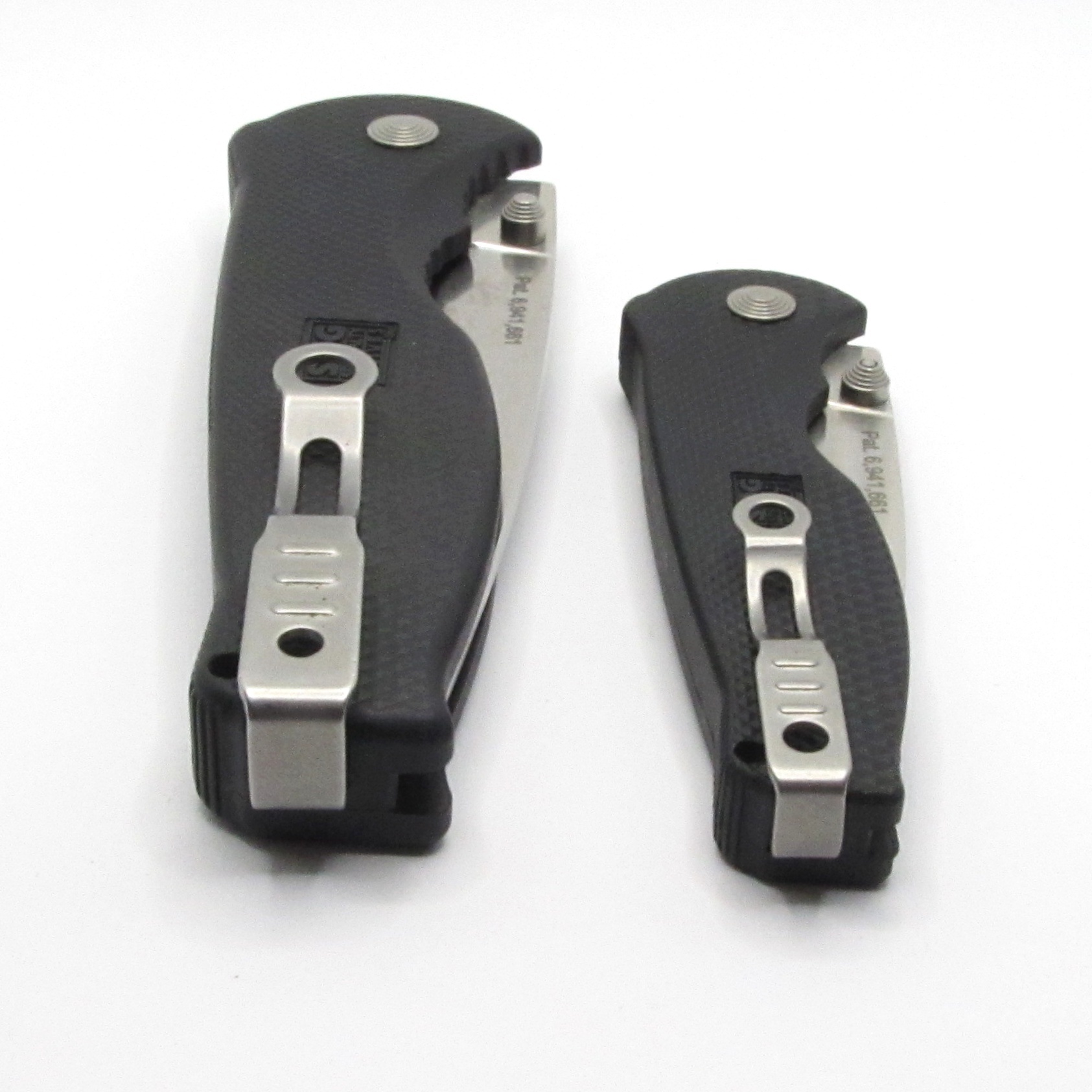
Both sizes of the Flash come equipped with deep carry pocket clips. This definitely wasn't a common thing back in 2002, and reviewers at the time hated it. Oh, how far we've come since then. Despite appearances the clips are also reversible, by way of removing a single screw beneath. They slot in at the rear of the knife, and a screw hole is provided in either side. You can undo the screw, insert the clip the other way 'round, and put it back in. Or remove it entirely if you like, and the knife doesn't look too weird without it. There is a little lanyard hole hidden on the tail as well. Very modern.
A relic of that bygone era, however, are blades made of AUS-8 stainless. It's roughly equivalent to 440B or 440C and an alloy that seemingly no one makes a knife out of anymore, but was all the rage at the turn of the millennium. The thumb studs are ambidextrous but the locks are not: One unlocking toggle is provided only on the left hand side, opposite the clip, ready to be manipulated by a right handed user's thumb. Oh, and all the screws are Allen heads, not Torx as we now expect. Nobody used Torx screws on anything but super premium knives yet.
The Flash II's lock toggle, the part of it facing the user anyway, is round and stairstepped and very Axis-looking. The one on the little Flash I isn't, and is a rectangular slider with some jimping on it, presumably so it could be smaller. The toggle on the Flash I is free moving enough that it can rattle around when the blade is closed. That's only marginally irritating.
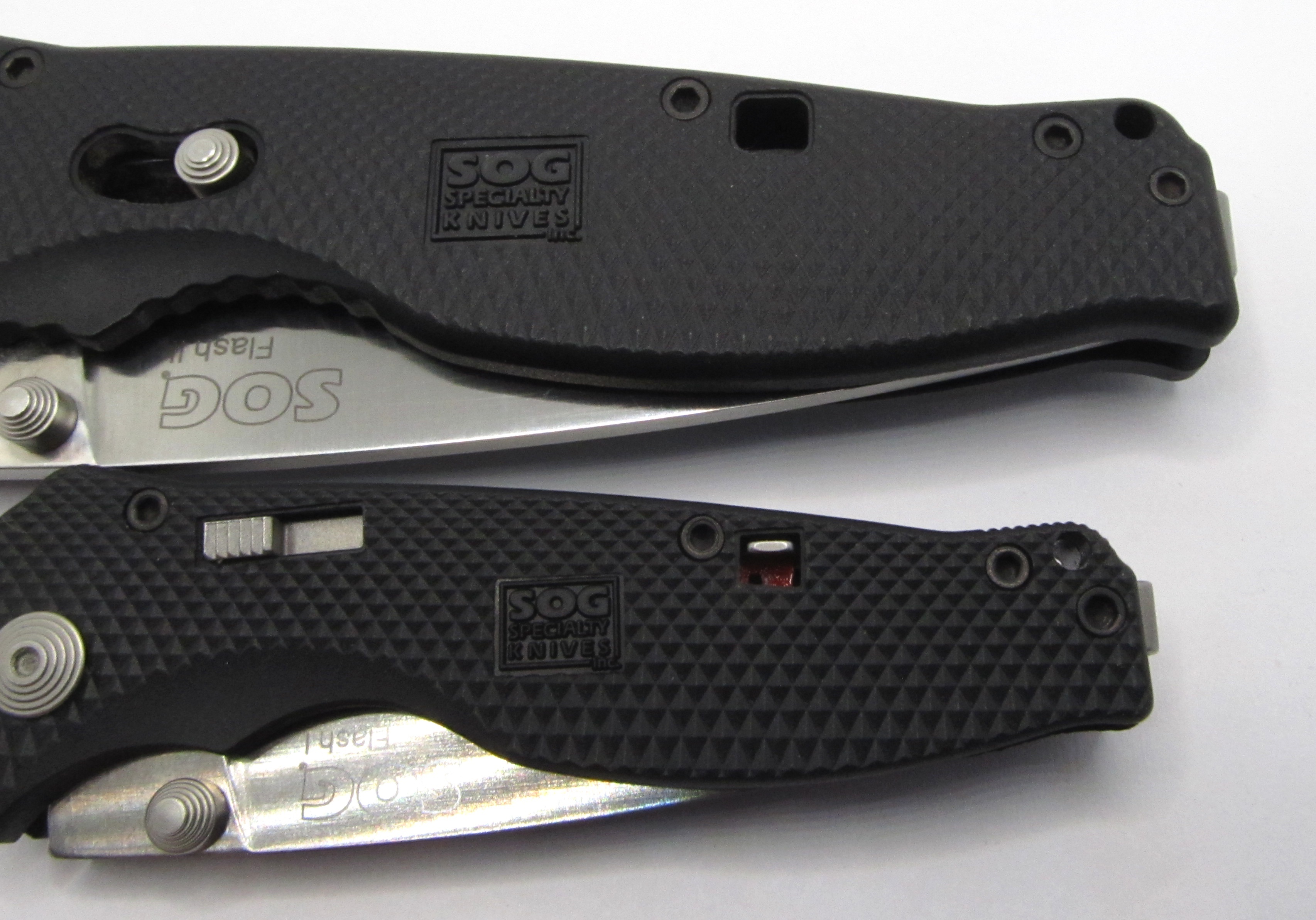
Both variants also sport a pair of safety locks -- as was the style at the time -- and you'll notice that I removed the one on my larger Flash II back in the day because it was, let's be honest, much more irritating than the toggle rattle. Switch it down away from the spine and the safety locks the entire mechanism sold by inserting a hook into the rear of the lock. That really rather defeats the purpose of a "fast deployment" spring assist folder, and it's entirely too easy to activate accidentally or while drawing the knife from your pocket. You can actually engage the safety just by having the knife rub against the inside of your pocket while you walk around, and the damn thing detents into the locked position but not the unlocked position. This means you can virtually guarantee that your knife will not be ready when you need to draw it.
So fuck all that noise. Yeet.
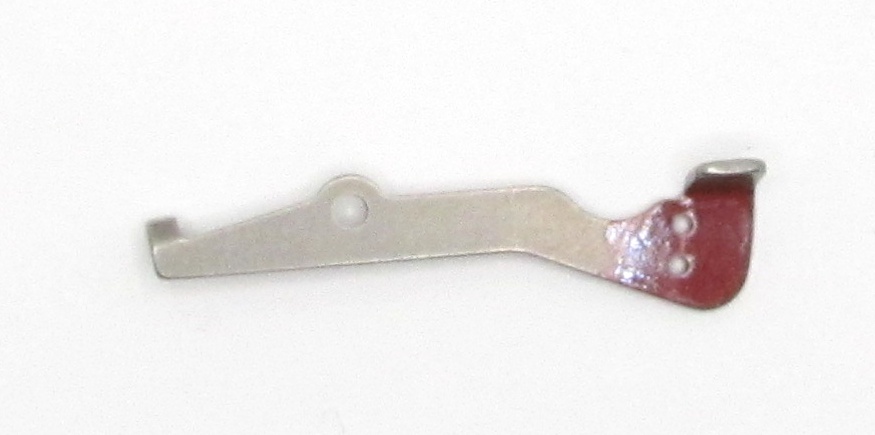
Wait. Nobody had invented yeet by 2002. Oh well. (And yes, I still have the lock lever for my Trident II, and no, I don't need told what it says about me that I was able to lay my hands on it at a moment's notice still.)
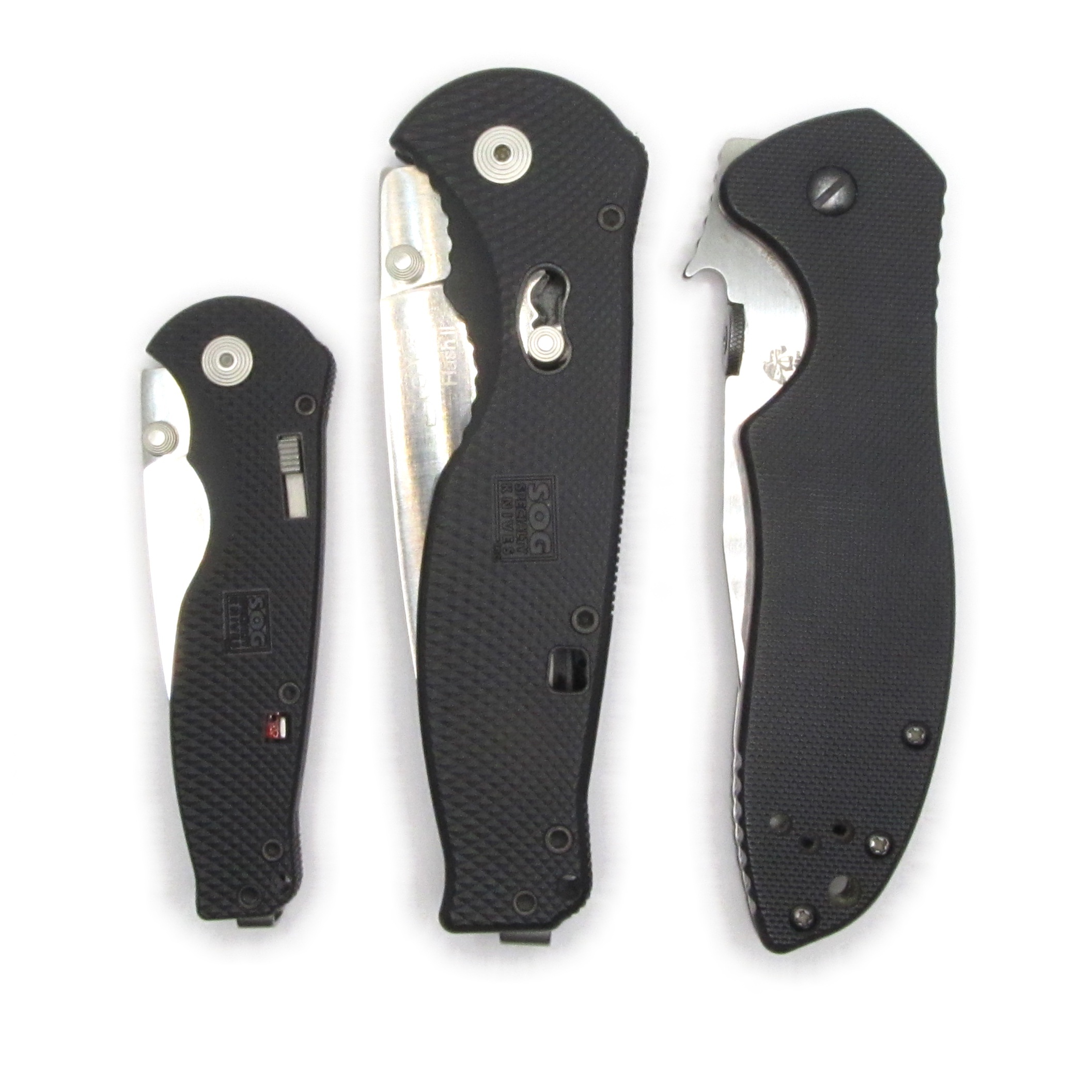
The usual Object for scale. Side profile notwithstanding, both sizes are less than svelte. The larger Flash II is 5/8" thick not including the clip -- easily 1-1/8" with it -- and has handle scales that are made entirely of slabs of injection molded glass-filled Nylon. In an attempt to make it sound fancy and high tech some manufacturers (particularly Schrade) called this "Zytel," which was its trademarked name. Remember, this was back before anyone had really heard of Micarta or G10. There are no steel liners inside, either. These are composite all the way through. That includes the spacer between the halves, which is molded in to the right hand scale. The added bulk is probably required to achieve adequate rigidity. So these are decidedly chunky knives, which SOG did and still markets (in their current incarnations) as "for professionals." Who I guess might need to fish out and operate the things with gloves on, or something.
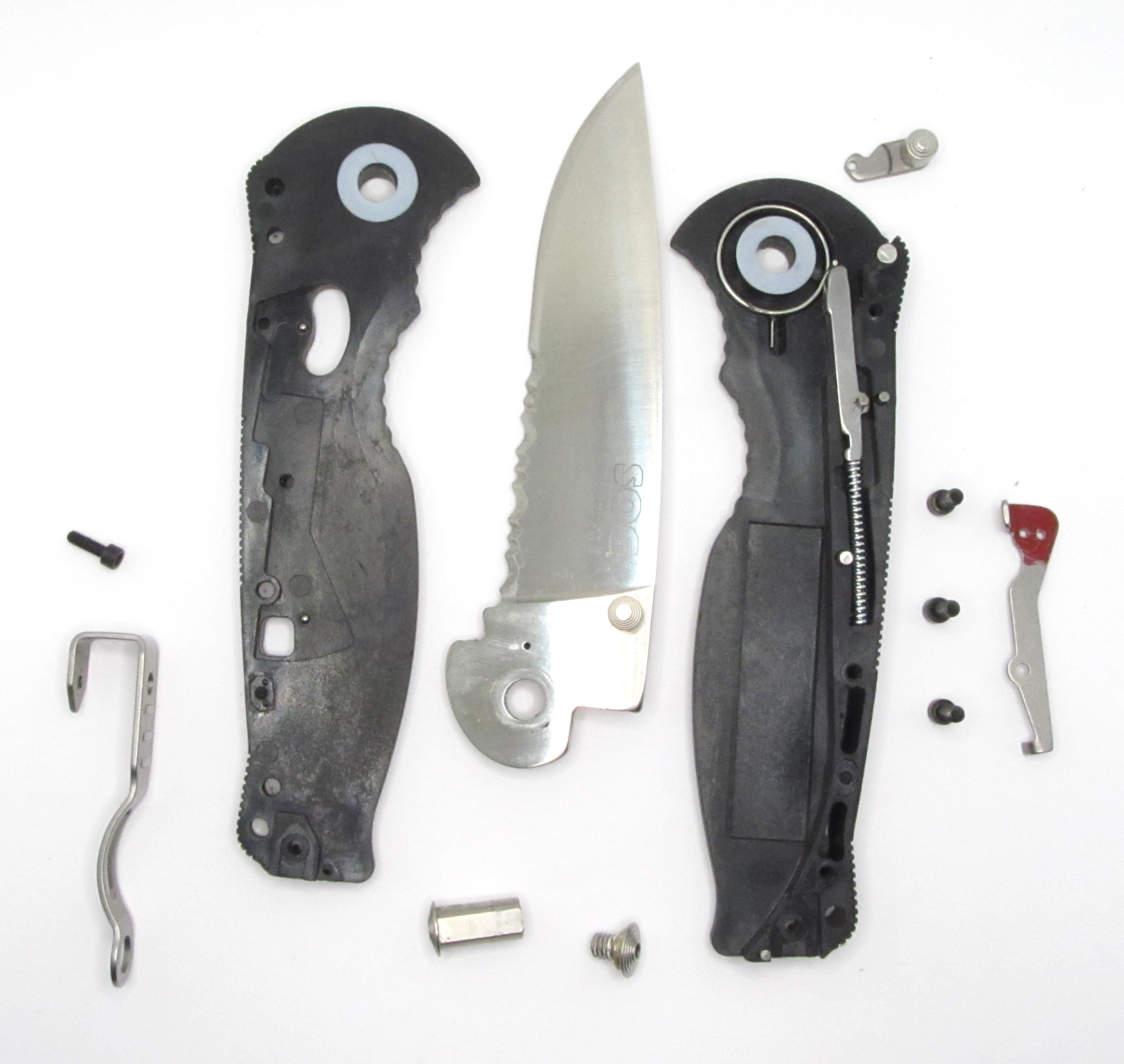
Here it is smashed to pieces.
Normally there's not much to look at in a regular folding knife, but since we're talking about the lock on this one let's talk about the lock. Also, I brought you this picture despite my loathing of taking apart spring assisted folders, because they inevitably go "sproing." And then you have to put them back together.
As you can see, the entirety of the handle body is glass filled nylon, or composite, or Zytel, or whatever you want to call it. The two halves are aligned by a quartet of steel pins which are slip fit, and prone to dropping out and leaping under the furniture. The largest of these also serves as an end stop when the blade opens. The blade rides on two very thin and soft washers that I think might be PTFE. This knife hasn't been cracked open in two decades, either, so I had to use my little brush to remove an embarrassing amount of dirt and pocket lint from the inside before the photography. I didn't to a perfect job. Sorry about that.
The opener spring is visible there on the scale on the right. All the action happens on that side when the knife is put back together.
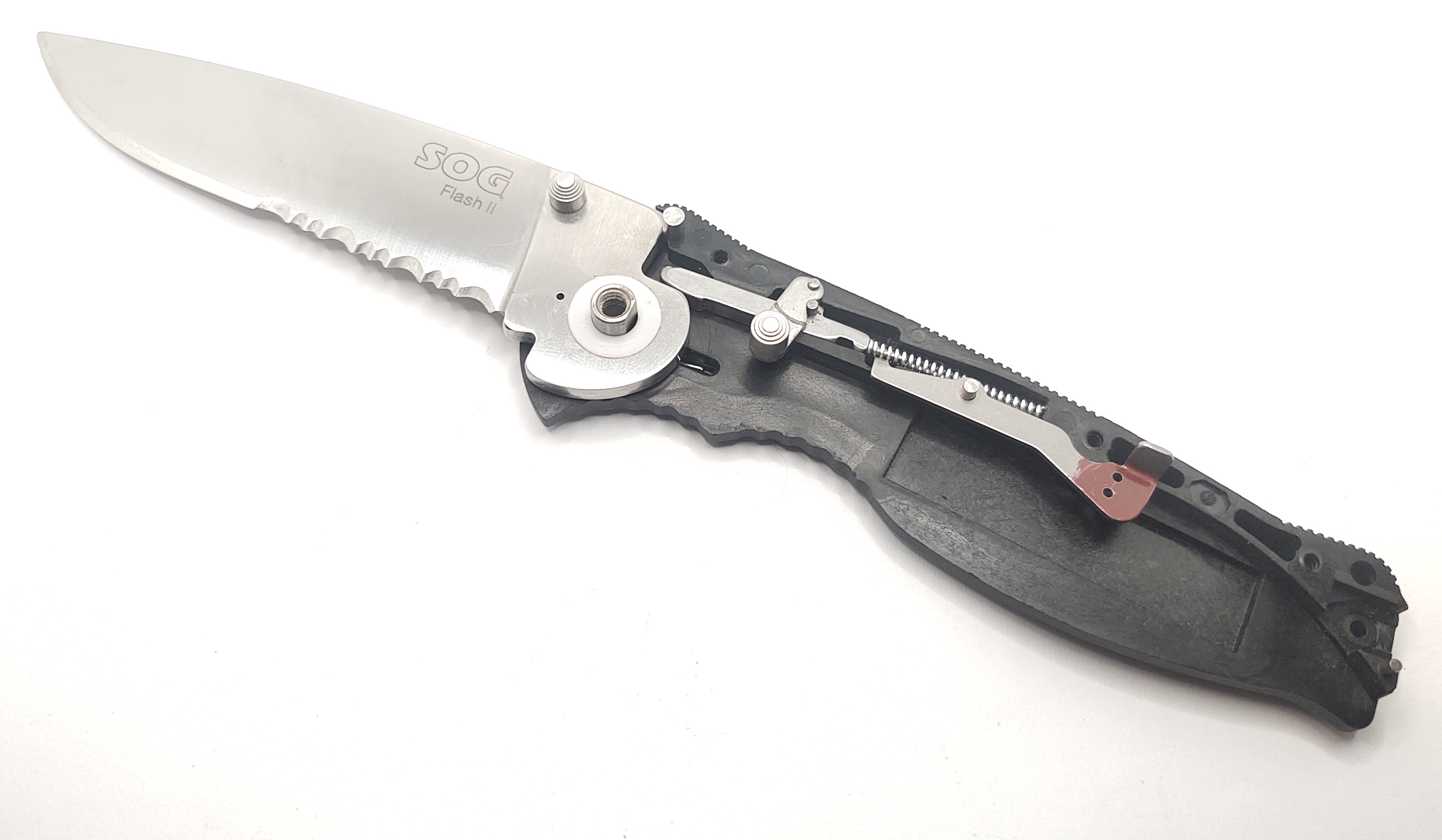
Here's the mechanism, with everything in place and delicately balanced against Going Off Boing. I put the safety lever back in place as well. The lock piston is the thing with that coil spring behind it. The toggle just swings on a pin and pushes another pin sticking out of the piston, retracting it so you can close the knife. The piston is held back by the radius on the heel of the blade when it's closed, and also serves to restrain it gently against the tension of the opening spring. Thus when the knife is closed there's nothing holding the toggle in place and you can fidget around with it freely.
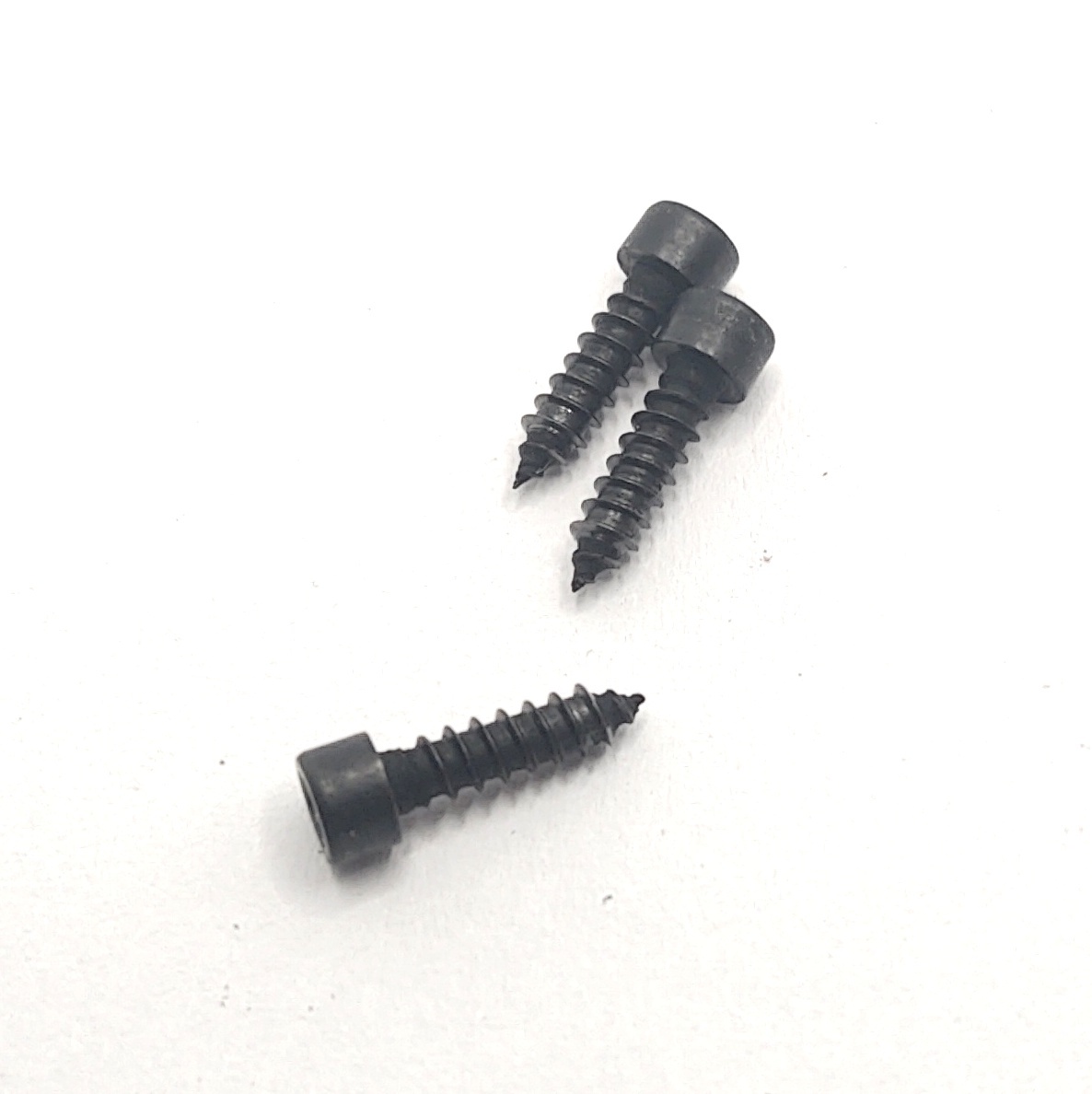
Here's something weird. Since there are no metal parts in the handle scales, the screws have these wood screw style threads on them. They're just chunked right into the material. There are no inserts or anything.
The Inevitable Conclusion
As usual, my meandering ramble on this sort of thing is relegated to historical interest only, because you'll have a tough time buying one of these today even if you wanted to. In their era, these SOG knives were The Business -- this was the state of the art for mid-grade tactical folding knives. They were also everywhere. You could buy these at Lowes and Home Depot and the sporting goods stores, and they were probably one of the very few halfway decent knives you were going to find there.
So when anyone tries to tell you there hasn't been any actual change in the pocket knife space for the last X number of years, just show 'em these for a reminder.
And sometimes it's nice to be able to look back on from where we came from.
